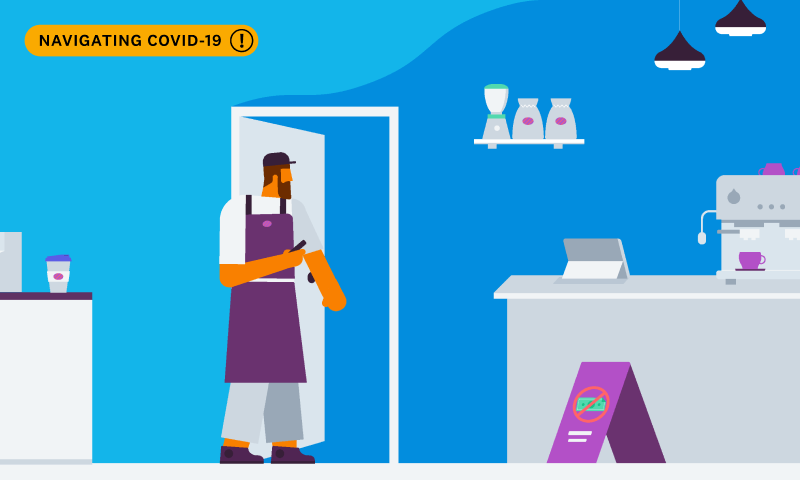
The posts in this series have been drawn from Xero’s Stronger and smarter: a small business handbook. Designed to help small businesses determine which steps to take next, this practical guide uncovers the 10 trends shaping the future – so you can come back stronger and smarter than ever.
Switching to cashless transactions with low human contact makes things quicker, easier and safer. The move towards faster, easier ways to shop is accelerating every day. Contactless cards, digital wallets, even tapping your watch – they all bring new levels of convenience that customers have grown to love. Now, these cashless solutions are popular for an all-important new reason: hygiene.
As businesses reduce their use of cash for health reasons by embracing tap-and-go payments, they also benefit from quicker reconciliation, reduced theft risk, and lower storage, transportation and security costs. Basically, it’s the best of both worlds.
Finding new ways to delight customers
With some big thinking, you can go even further. For instance, if you can deliver a favourite product to your customer’s door in a contactless drop-off, that provides yet another layer of safety, convenience and delight.
Perhaps you might use the move to cash-free living to reward your customers through a loyalty program? Cashless payments open the window to digital receipts, where customers provide an email address so that an electronic receipt can be sent straight to their inbox. That’s an easy opportunity for you to grant reward points and offer special deals just for them.
Taking the low-contact idea even further
The driving force behind cash-free purchases is also changing the way we produce goods and services. Having fewer points of human contact during your production process not only slows the spread of illness, but also delivers greater speed, efficiency and accuracy through automation.
The low-contact principle might also extend to the shopfront, where your customers’ wish for safe transactions could see you installing practical hygiene options like door sensors, touchless soap dispensers, or voice-activated appliances. It’s all part of the new low-touch economy which is also likely to ramp up the appeal of do-it-yourself products.
These are just some of the ways that customers are changing how they buy, and reducing points of contact along the way. For your business, going cashless and trimming back the points of human contact along the production journey will help you save costs, save time, and meet changing expectations.
Consider your customer
- What contact-free doorstep delivery or click-and-collect options do your customers value?
- How can you fulfil customers’ growing preference for more home-made or self-assembled items?
- Can a reward program help entice loyal customers back?
Consider your business
- Can you minimise queuing and contact points during the sales process through automated orders, vending machine points, or self-service options?
- How can you reduce the volume of manual handling of materials, cash, and documents by your staff?
- How can you remove contact points in your production process?
Tips
- Consider moving all your transactions to cash-free, tap-and-go.
- Explore new checkout options, including digital wallets and mobile payments.
- Offer low-contact or contact-free ways for your customers to access your products and services, including home delivery where possible.
- Start eliminating unnecessary points of contact in your production process.
Leave a Reply